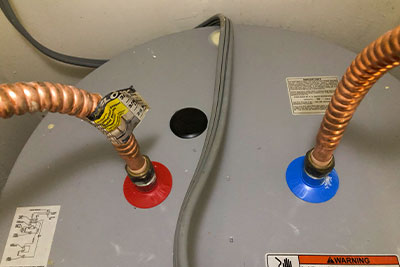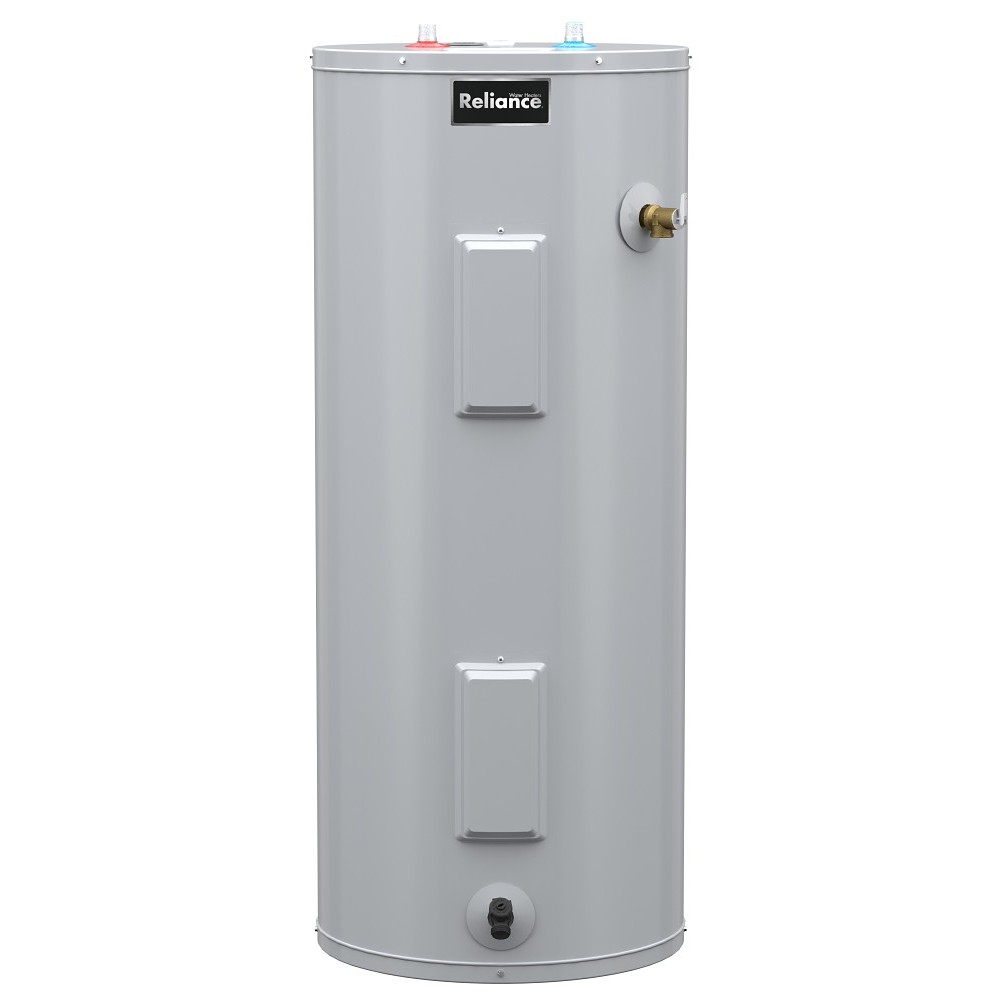

Water Heater Disposal
Water heaters tend to go out at the worst possible times: when you’re ready for a hot shower after a long day of work, have a sink full of dirty dishes, or need to wash laundry before the stains set in. While you can quickly get a new one at McCoy’s, what do you do with the old one? Here’s how to tackle water heater disposal and some tips on selecting a replacement.
Turn off the Power
First, cut off the power and disconnect the water heater from the energy source. If you have a gas water heater, use the cutoff valve to shut down the gas line and prevent gas leaks. For an electric water heater, flip the breaker in your service panel to completely shut off the power.
Always consult a professional electrician or plumber if you’re unsure of where or how to turn off your power source or gas line.
Always consult a professional electrician or plumber if you’re unsure
of where or how to turn off your power source or gas line.
Cut off Water Supply and Empty the Tank

Next, turn off the water and drain the tank. This is much easier than it sounds. Turn the water-intake valve all the way off to keep the tank from refilling. The intake valve is located on the pipes connecting to the water heater. Once the water is turned off, go around your house and turn on all your hot water faucets. It sounds strange, we know, but it makes the hot water still in the pipes drain back into the tank and helps drain the tank quicker by allowing air to get into the tank when you open the drain valve and release the water.
Once you’ve opened the faucets, locate the drain valve at the bottom of the tank. It’ll look like a water hose connection. Attach a water hose to the valve and direct the water to an appropriate drainage area like a curb drain or bathtub. Open the valve and let the tank empty. It will take several minutes for the tank to drain completely. Once the water stops flowing, double-check that the tank is empty. Remaining water adds extra weight and may exceed weight limits for disposal locations.

Disconnect Your Tank
Now you need to disconnect the pipes connected to the water heater. Some pipes will have connections that can simply be screwed off, but others will be hard-plumbed (pipes run directly into the tank without connections). If your tank is hard-plumbed, the only way to remove it is to saw off the pipe using a hacksaw, leaving a few inches to connect the new water heater.

Remove the Tank from the Water Heater Closet
We’re almost there, but the next step can be challenging - grab a buddy to help. Water heaters, even without water, are incredibly heavy, sometimes well over 100 pounds depending on the size and brand. You and your partner will need to remove the tank from your water closet or platform. The most important part of this step is to take it slow and easy. If your closet has a door on it, it helps to remove the door. The easiest way to move the tank is to carefully tilt it on its side and roll it. There may be some residual water leaking out of the tank, so having towels available for cleanup is a great idea. If possible, take the water heater directly to the vehicle you plan to transport it with, so you only move it once.
Water Heater Disposal
So now that your water heater is removed and loaded up, where do you take it? You have two choices.
The first option is to recycle your water heater. Many local recycling centers or scrap metal collectors accept water heater tanks. They can scrap them for valuable metals like steel, copper and brass and reuse the materials. Some recycling centers will even pick your water heater up from your house, so before you make the trip out there give them a call and check.
If recycling the tank is not doable, your second option is to dispose of your water heater at a landfill. Your city may offer a bulk collection service or community clean up, where they come by and pick up large or heavy items that don’t fit in a trash bin. Before you take it to the curb, call your city and make sure they can pick up old water heaters and find out which day to set it out. If your city is unable to pick it up, or you live outside of city limits, you can load it up and take it directly to the landfill to dispose of it for a fee.
Now that your old tank is uninstalled and off your property, it’s time to install the new one and enjoy a working hot water heater! If you have any additional questions about disposing of a water heater, please consult an electrician or plumber and they can give you resources specific to your area.
Selecting a New Water Heater

As part of the National Appliance and Energy Conservation Act (NAECA), energy codes from the Department of Energy mandate that residential water heaters manufactured as of April 16, 2015 improve R-values of the insulation around the tanks. This mandate resulted in new water heaters being taller and wider than older models. McCoy’s 30-, 40-, and 50-gallon model water heaters are affected by these changes.
With diameters and heights of many water heaters increasing up to 15%, installation issues may occur when replacing an older model. If your water heater is in a confined space or in a closet, the new model of the same gallon capacity may not fit.
For installations where space is not an issue, you can replace an older model with a unit that has the same capacity but a larger physical size. For installations where space is an issue, a unit with smaller capacity may be the best fit. A unit that uses a different technology may be a good option.

Tankless Water Heaters

For example, you may consider switching to a tankless water heater system, especially if your space is limited. These systems are becoming more popular, and for good reason. Tankless water heaters are more energy-efficient and offer a nearly endless supply of hot water, since they heat two to five gallons of water very quickly as you need it, when you need it.
One thing to keep in mind with tankless water heaters: because they do not have a large reservoir of already hot water, they may not be able to keep up with demand if hot water is needed in several areas at once. Some combat this issue by staggering when they use appliances while others have separate tankless water heaters designated to appliances versus one for the whole house.

McCoy’s Has Options
If you find yourself needing a new water heater, stop by your local McCoy’s. We keep many standard sizes and styles of water heater tanks in stock and ready to go. Decided you want to try a tankless system? Your local McCoy's may have just what you need in stock, or our team can special order a wide array of options to suit nearly any need.




